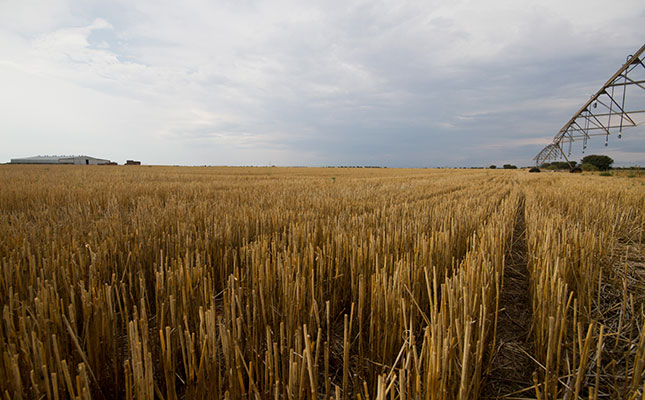
Soil erosion continues to be a major threat in many regions of the world, despite decades of focused scientific research and societal concern.
READ Fertilisation: basic principles that every farmer should know
In its 2015 ‘Status of the world’s soil resources’ report, the Food and Agriculture Organization of the United Nations (FAO) stated that soil erosion was judged to be the number one threat to soil functions in five of seven regions, namely Africa, Asia, Latin America, the Near East and North Africa, and North America. In the first four, erosion showed a deteriorating trend.
Erosion is a natural geological process and is impossible to stop. The goal is to manage human impact on the soil so that the rate of erosion is within an acceptable range.
Soil erosion is defined as the net long-term balance of all processes that detach soil and move it from its original location. Water, wind and tillage are the three main types of erosion.
Each involves distinct processes that detach and transport soil; hence each requires a different approach to decrease the rate of erosion. In some regions of the world, all three types of erosion operate simultaneously on the landscape, and identifying the processes occurring at a location is a key element of erosion control.
Although many technical solutions are available to combat soil erosion, these can be implemented successfully only in the context of a supportive societal environment.
Secure land tenure
Over the past decade, the focus on soil has moved to a broader discussion about soil governance, which has centred largely on the role that various actors play in the adoption of erosion control measures.
Many studies agree that a key role for governments is to ensure secure property rights for soil users. Lack of secure land tenure is a major impediment to the adoption of erosion-control measures.
READ SA’s biggest land reform mistake
The need for secure land tenure is especially important for soil conservation measures, given that many of these do not have discernible short-term benefits.
The greatest damage to soil occurs where tenure is the most volatile, for example with migrants and refugees. In such circumstances, local knowledge is poor, and mining of the soil is essential for survival, at least in the short term.
The decision of whether or not to adopt erosion control measures is most often made by the soil user: the farmer or pastoralist in the agriculture sector. The following needs to be in place for adoption to occur:
- Soil conservation must benefit land users. Farmers implicitly compare the expected costs and benefits of their operations, and then invest in options that offer the highest net returns, either in income or reduced risk. In some cases, the highest, but short-term, net returns might be realised from forgoing new conservation technologies.
Where the private costs of adopting and adapting conservation interventions outweigh the benefits, voluntary adoption will be greatly hampered unless society is willing to internalise some of the costs and offer subsidies to farmers. - Future land and water conservation projects should be flexible enough to provide a number of different technologies and management practices to farmers, so that they can choose, test, adapt, adopt or discard as they see fit. Farmers often apply creative and sophisticated methods that exploit variation in terrain and microclimates, use crop/livestock synergies and locally available inputs, and invest in soil-improving technologies where economically feasible.
- Research programmes that address soil erosion should focus on a broader landscape or catchment approach, as this is more effective in addressing erosion-related land degradation than being overly focused on the plot or field scale. A concept such as climate-smart landscapes, for example, involves designing landscape interventions to meet multiple objectives such as human well-being, food and fibre production, and conservation of ecosystem services, including erosion control. The components of a climate-smart landscape include protection of natural habitats, restoration of degraded watersheds and rangelands, and adoption of reduced tillage to minimise erosion and build soil carbon.
- The gap between public goods, such as clean water and storage of greenhouse gases, and private property rights must be addressed. In the majority of cases, managed soils are in the hands of private property owners who hold the full property rights assigned to them. The governance of soils therefore depends primarily on the voluntary contributions of soil owners to manage their soils sustainably. In the views of many landowners, public regulation constitutes an interference with their property rights.
Economic incentives required
The differences between private goods (such as food products) and public goods (such as storage of greenhouse gases, water purification and biodiversity) result in major challenges for soil governance.
But the gap between private self-interest and the need for action on public goods can be bridged by using society’s payments for ecosystem services.
READ Water problems: why SA’s farmers face multiple risks
For example, erosion control measures that increase carbon storage in lands or that reduce agrochemical pollution of waterways often fail to deliver tangible benefits to farmers.
Economic incentives are required to encourage adoption of measures to meet the need for public goods. However, it has been a major challenge to calculate the appropriate amount of subsidisation for soil management practices that enhance ecosystem services.
An understanding of the socio-economic drivers of erosion is essential to understand society’s response (or lack thereof) to the threat of erosion. Two overarching issues have been identified.
First, many of the impacts of erosion occur off-site, and there is no direct benefit for the soil user to implement control measures that minimise these off-site impacts.
Second, the long period required for many erosion control measures to have a clear beneficial effect limits their adoption, especially for soil users who do not have secure tenure rights to their land.
There are also important issues in specific regions: for example, the competing uses for crop residue in areas in Africa limit the feasibility of erosion control through on-field residue management.
Three main levers are available to increase adoption of soil control measures: enhanced extension, leading to voluntary adoption; regulation, coupled with effective enforcement; and economic incentives.
The correct balance among the three approaches appears to be difficult to achieve, and soil governance at every level deserves more attention.
The views expressed in our weekly opinion piece do not necessarily reflect those of Farmer’s Weekly.
This is an excerpt from the Food and Agriculture Organization of the United Nations report, ‘Soil erosion: the greatest challenge for sustainable soil management.’











